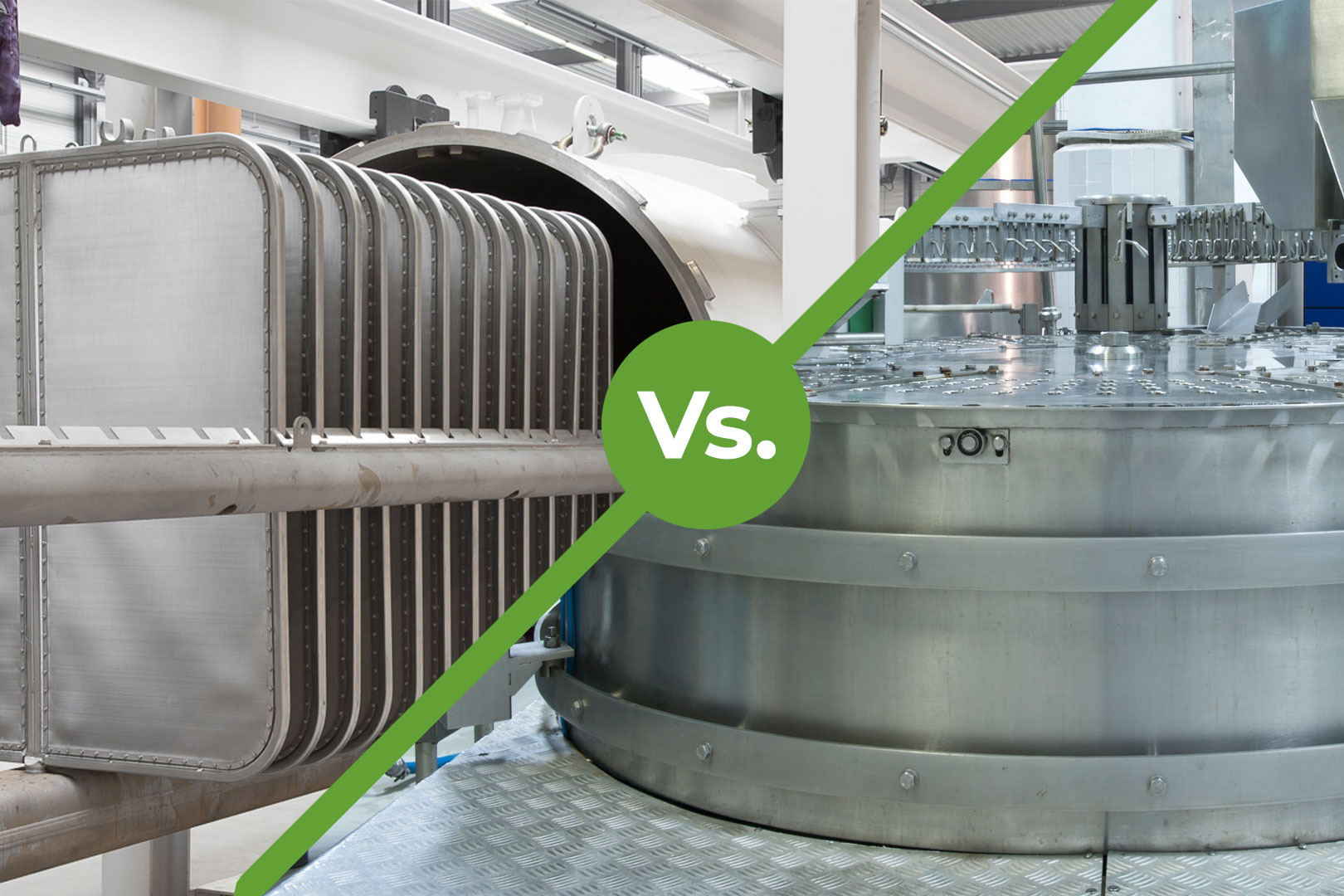
How to Choose Between a Pressure Leaf Filter System and a Decanter Centrifuge for Edible Oil Clarification
Edible oils are produced by pressing oil seeds and separating the oil from the solid seeds. Each application requires the best possible equipment to remove the solids but most oils still leave the process containing up to 10-20% solids which has a direct impact on the quality of the end product.
As a result, manufacturing plants must filtrate the remaining impurities and particles from the oil so to achieve a high quality clear product and a variety of filtration solutions are available in the market for that specific purpose.
Gravity is usually the first step in the clarification process. Oil from the filter press is pumped into large settling tanks where gravitational forces gradually pull solid particles down to the bottom. The supernatant oil is then drawn off the top of the tank and sent to further clarification steps. If more solids need to be removed, however, the next process has two main options: a pressure leaf filter system or a decanter centrifuge. Here’s a brief overview of each system:
Pressure Leaf Filter system
A pressure leaf filter system consists of a series of pressure filter leaves vertically positioned inside the vessel. As oil is pumped through the leaves, solids are trapped on the surface and gradually build up, forming a cake. When the cake becomes too thick, it needs to be removed. Pressure leaf filter systems can be used for edible oils with high solids content, with a vertical pressure leaf filter system ideal when a small footprint is required and an automated system is preferred.
Pressure leaf filter systems are ideal for the filtration of edible oils as their fine stainless steel mesh captures the smallest impurities and particle sizes, delivering a high quality product generally with only 0.1% solids. The stainless steel material and closed system feature (for vertical pressure leaf filter systems) ensures a hygienic process which is a key requirement for the production of edible oils for human consumption. Pressure filter leaf systems are also available in carbon steel and other alloys depending on the production process required.
Decanter Centrifuge
A decanter centrifuge uses centrifugal force to separate oil and solids. As oil enters the centrifuge, it is spun around at high speed inside a cylindrical chamber. The heavier solids are forced to the walls of the chamber while the lighter oil moves towards the centre. The solids are then discharged through an outlet while the clarified oil exits through another opening. Decanter centrifuges can handle higher flow rates than pressure leaf filter systems, but they have more moving parts which require frequent manual maintenance and higher OPEX and labour costs.
| Systeme Specifications | Advantages | Vertical pressure leaf filter systems | Horizontal pressure leaf filter systems | Centrifuges |
| Filtration area | 1 – 125 m2 | 15 – 200 m2 | Not applicable | |
| Filter medium | Metal mesh pressure filter leaves | Metal mesh pressure filter leaves | Not applicable | |
| A closed system | Reduces manual contact with the filter media and the solids, ensuring a clean process and a safe operation. | Closed system | Fully opened system | Closed system |
| Automated system | Limited manual involvement required to operate the system, making it low cost in terms of manual labour and maintenance interventions. It also contributes to a safer working environment. | Automated system | Automated system – not a standard feature | Automated system |
| Energy Consumption | The energy consumption has a big impact on the operating cost of a system. | Electricity is used by the feed pump, and compressed air is used by the vibrator and the bottom valve for drying the cake (which is only done once per cycle). | Electricity is used by the feed pump and by the hydraulic system for opening/closing of the filter. Compressed air is used by the vibrator for drying the cake (which is only done once per cycle). | This system operates using centrifugal force which requires constant energy consumption, making it less economical to operate than pressure leaf filter systems. |
| Pump | All systems require a pump to transfer the liquid through to the filter. All pumps are located outside making replacement of parts easily accessible. Pumps are not always part of a filtration system and are often an additional purchase. | Applicable | Applicable | Applicable. |
| Dry cake filtration | When the filtrate is the product, dry cake filtration maximises the amount of product produced. It is also easy to dispose off when not required. | The cake is dried using compressed air or gas. This minimises liquid loss and increase yield. The dry cake is removed by a vibrator without requiring the system to be opened. | The cake is dried using compressed air or gas. This minimises liquid loss and increase yields. The dry cake is removed by a vibrator and the system must be stopped and opened. | The solids are discharged as a slurry, which contains a lot more oil than the dried cake from the pressure leaf filtration systems. |
| Filter system footprint | The best systems require less footprint when installed whilst providing greater filtration area, freeing the space in the plant or requiring less space to produce more, making it also more cost effective | Relatively small footprint | Large footprint | Generally, a centrifuge requires less footprint than a vertical and a horizontal pressure leaf fitler system. |
So, which system is right for your plant? The answer depends on a number of factors, including desired flow rate, production capacity expectations and solid content of the feedstock. Not only that, but there are budget considerations and with the cost of energy rising, operational efficiencies are key to a profitable operation. If you would like to discuss which system is best for your requirements, contact the expert Amafilter® team – we’d be happy to help you find the right solution for your plant!
